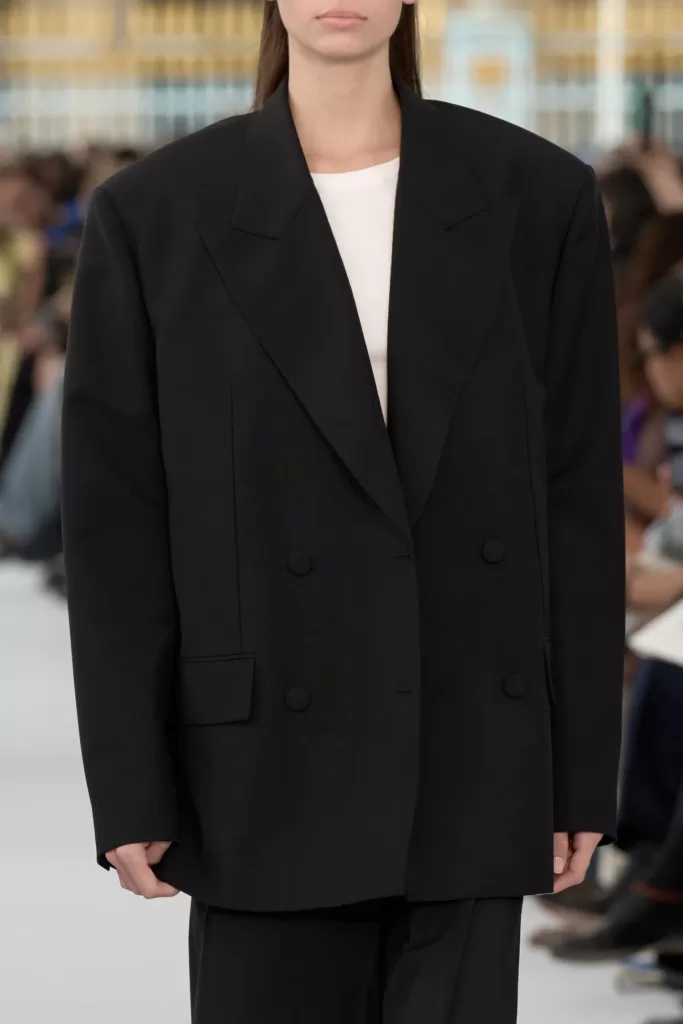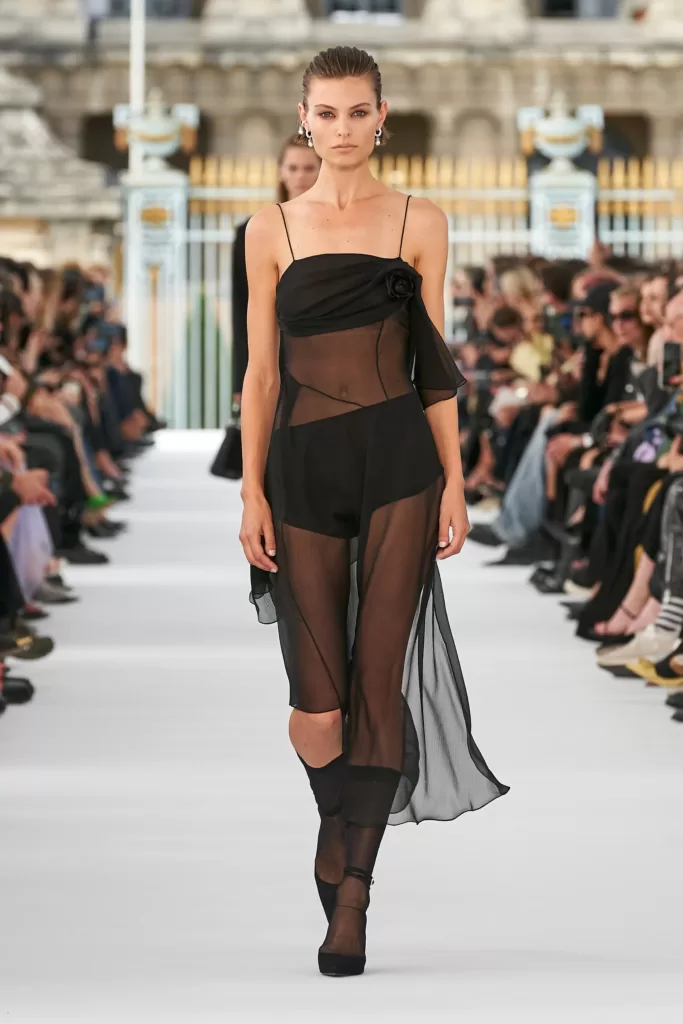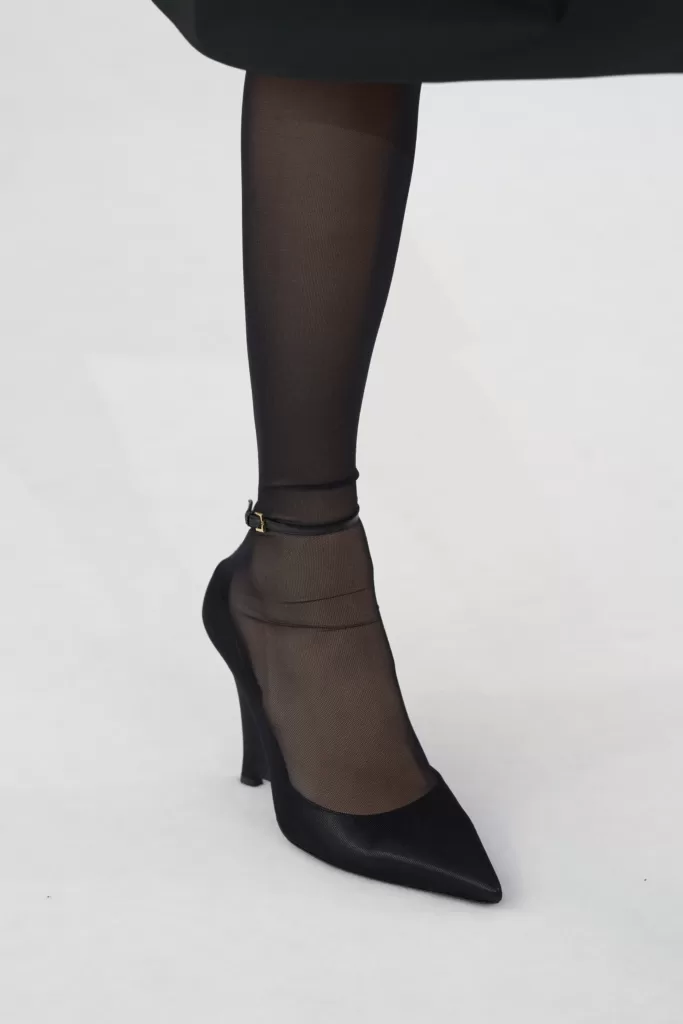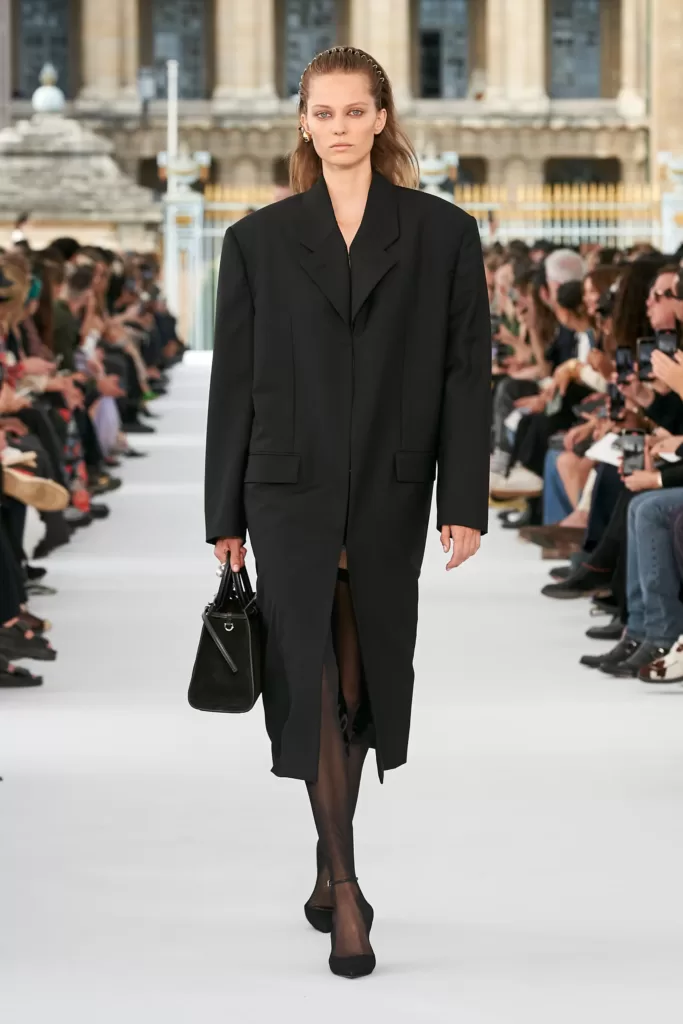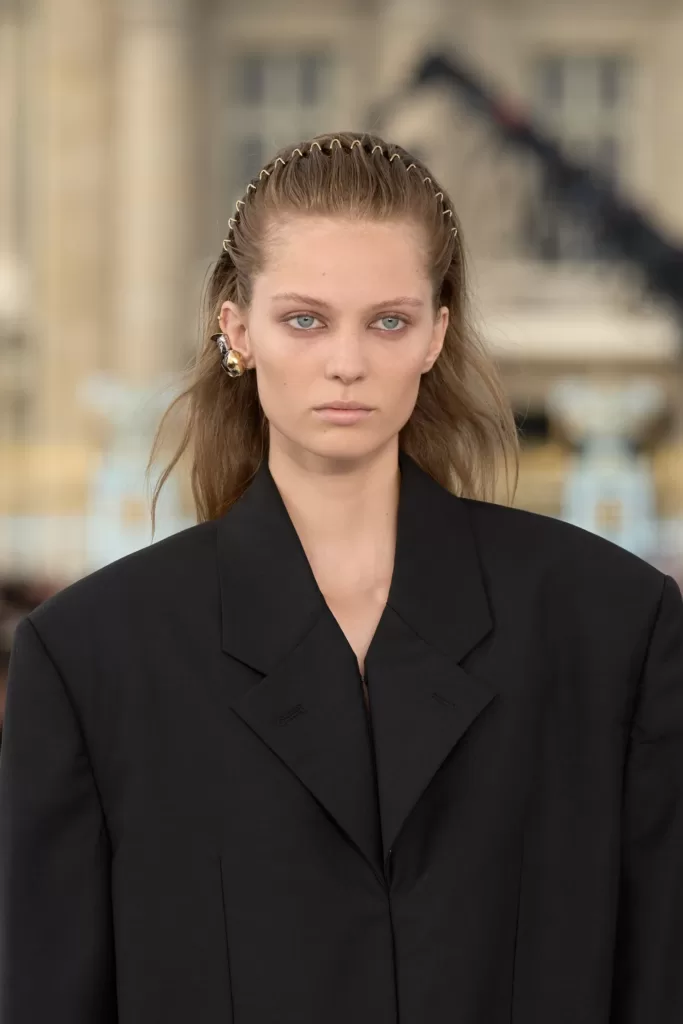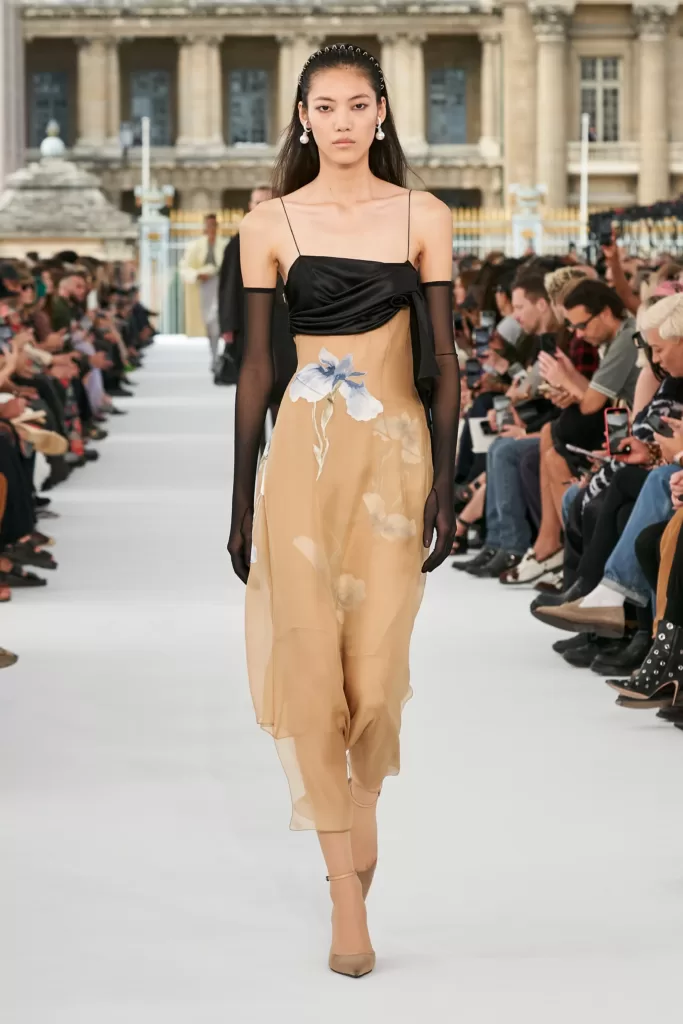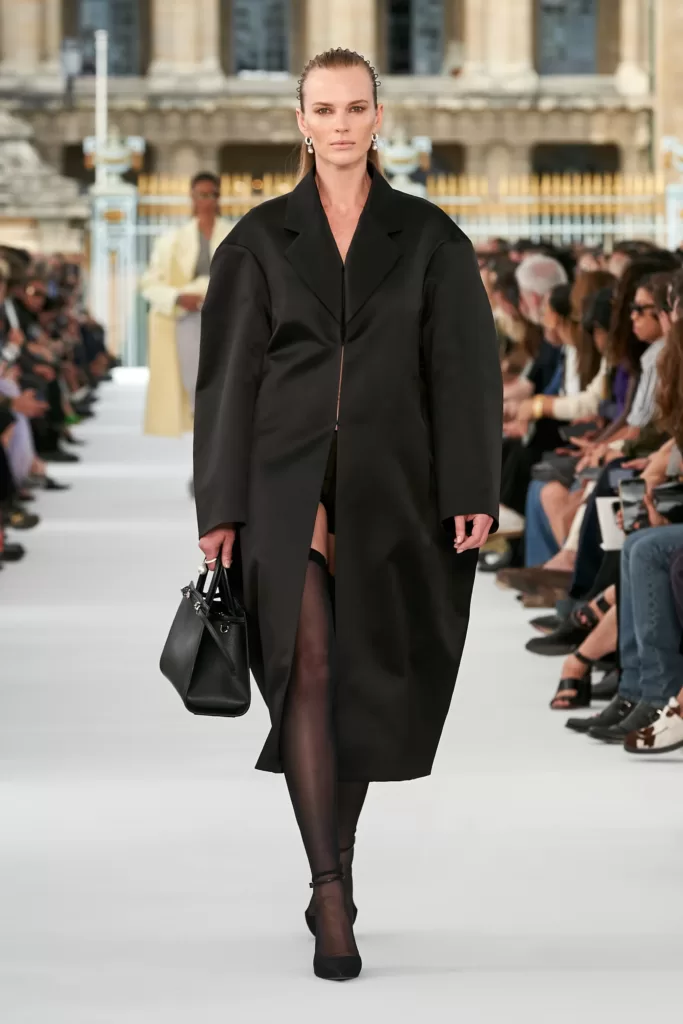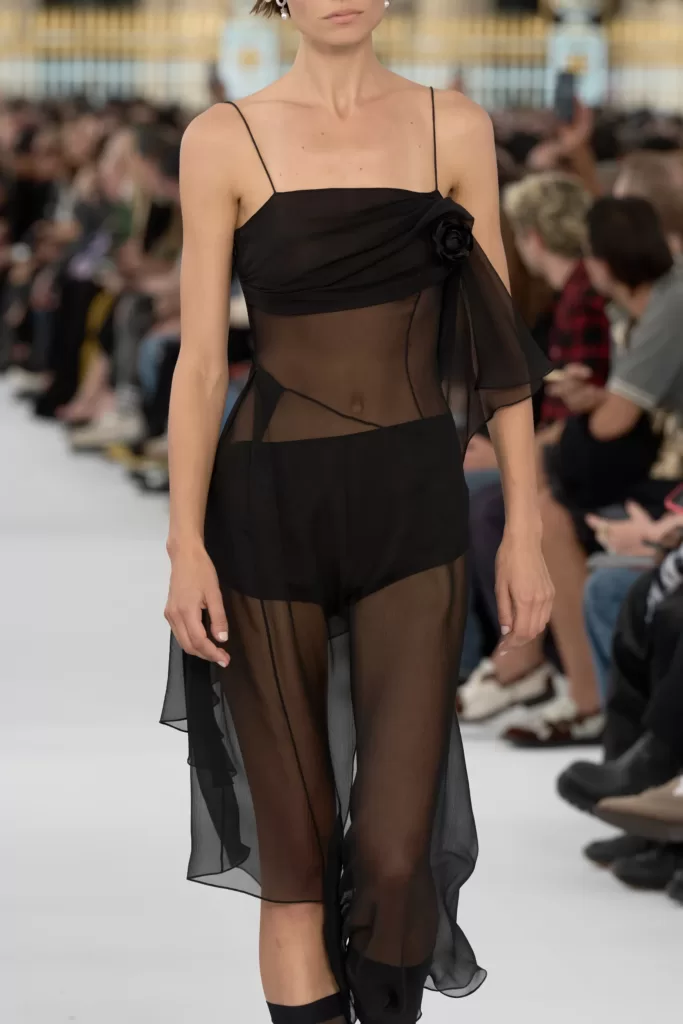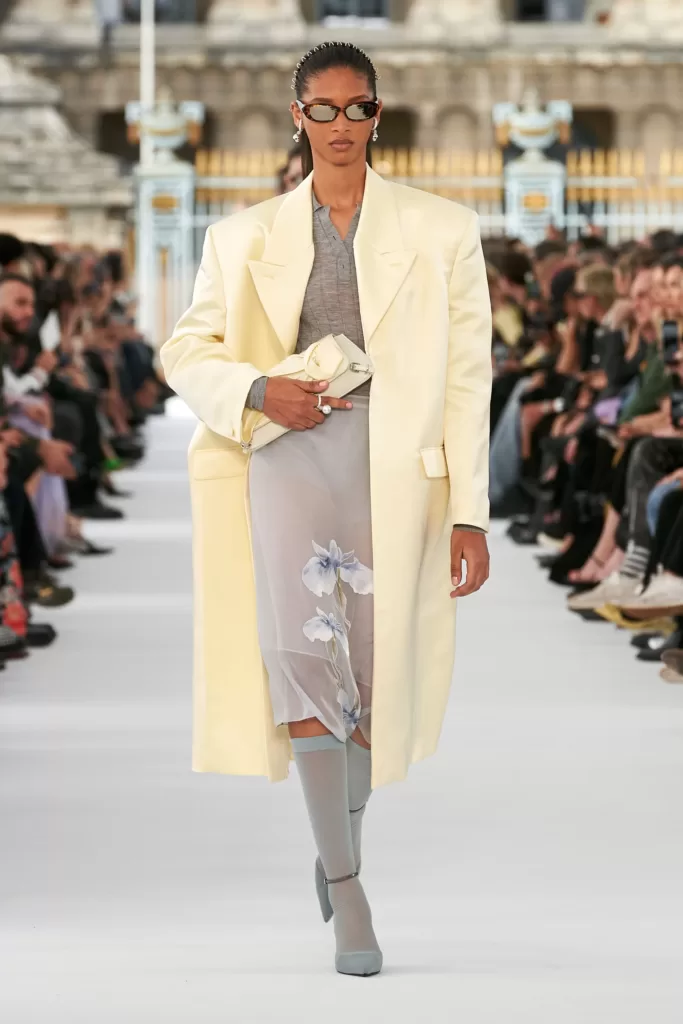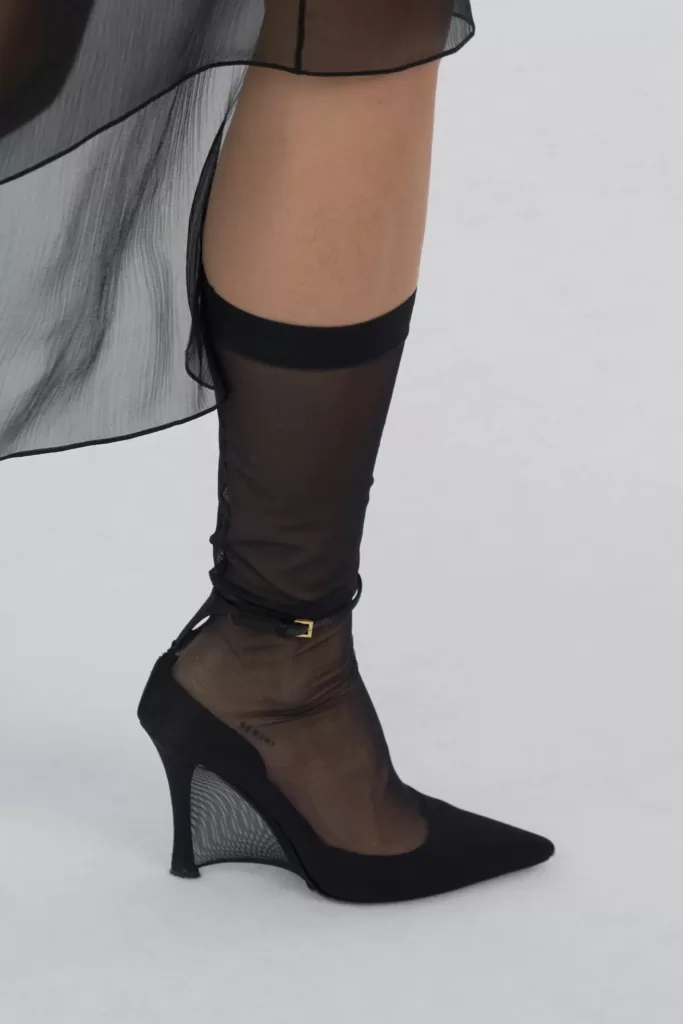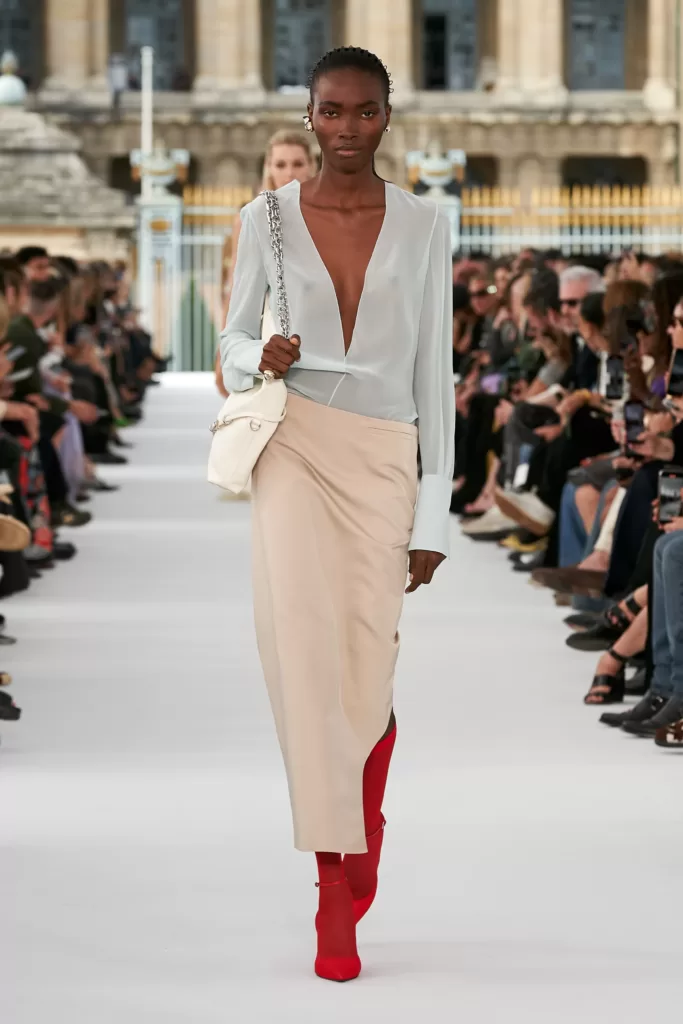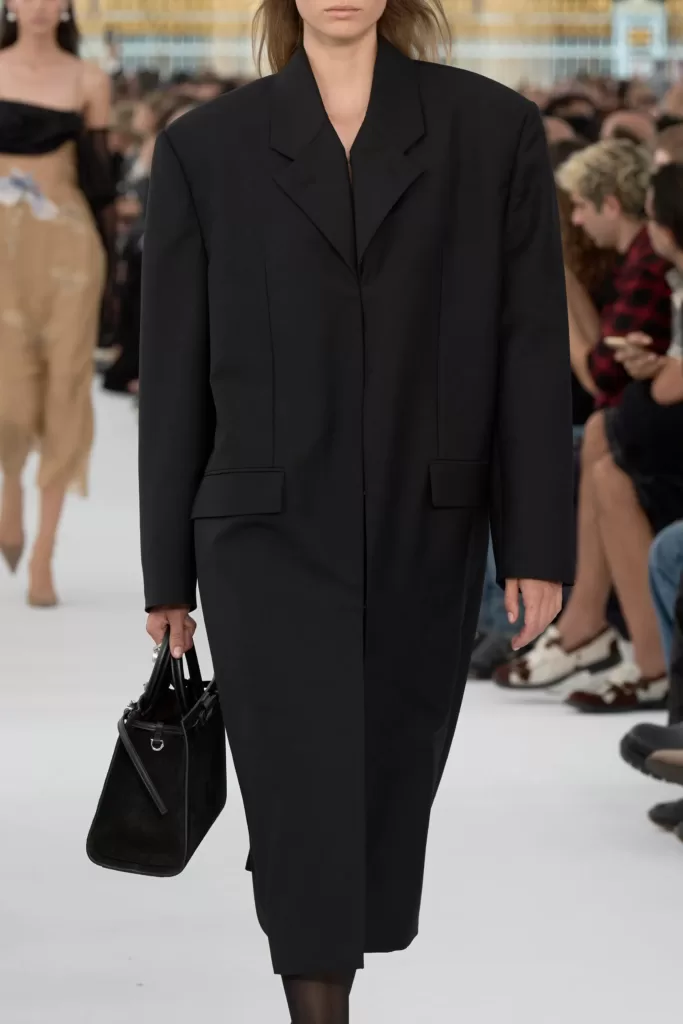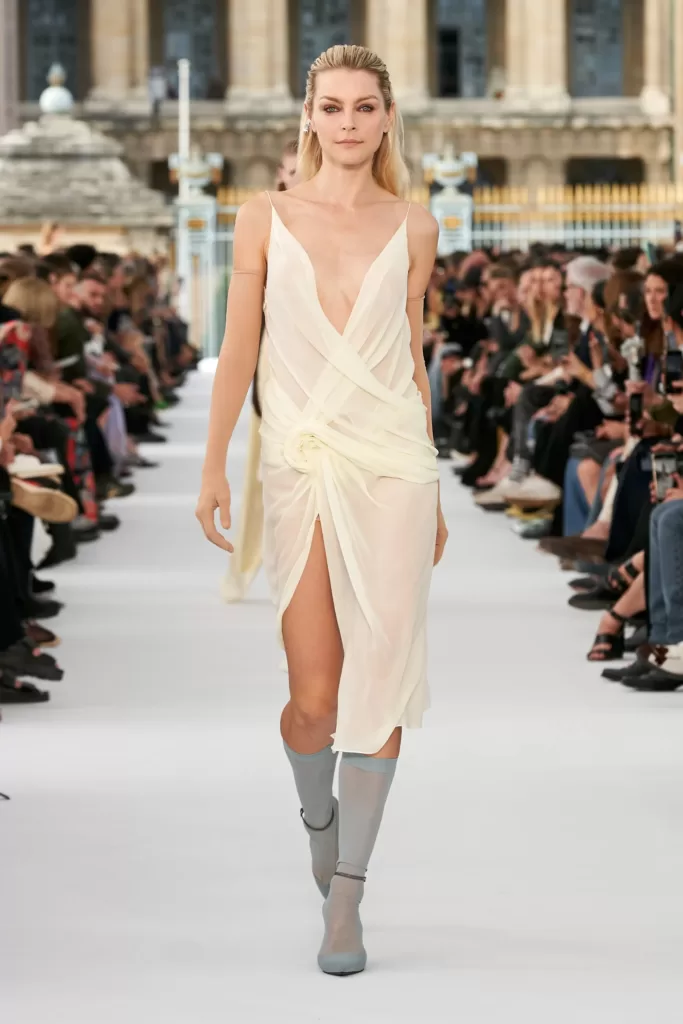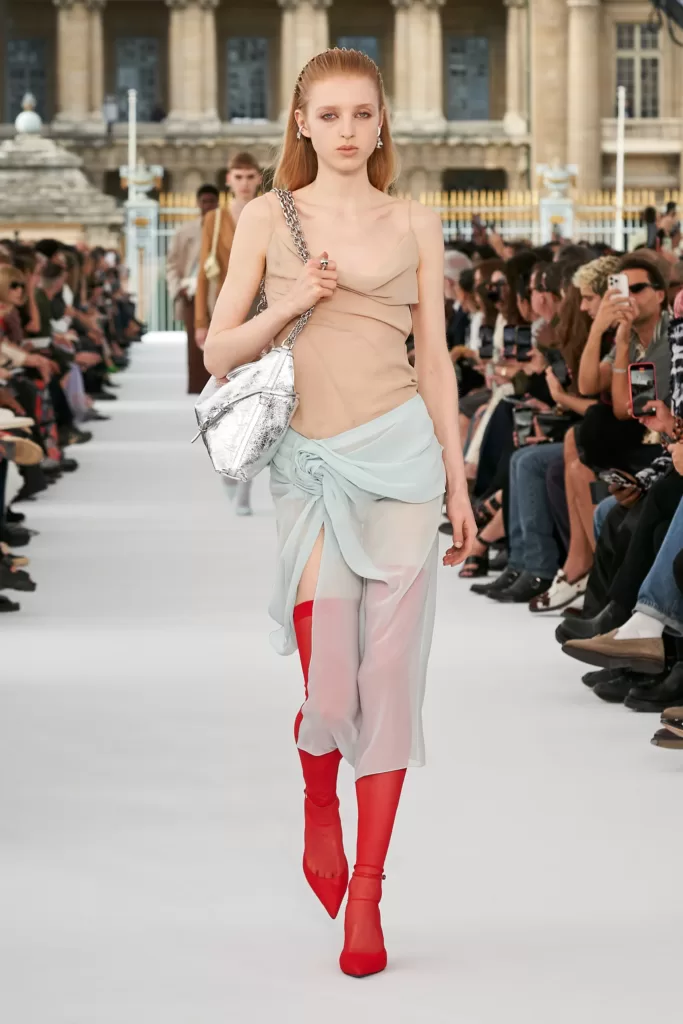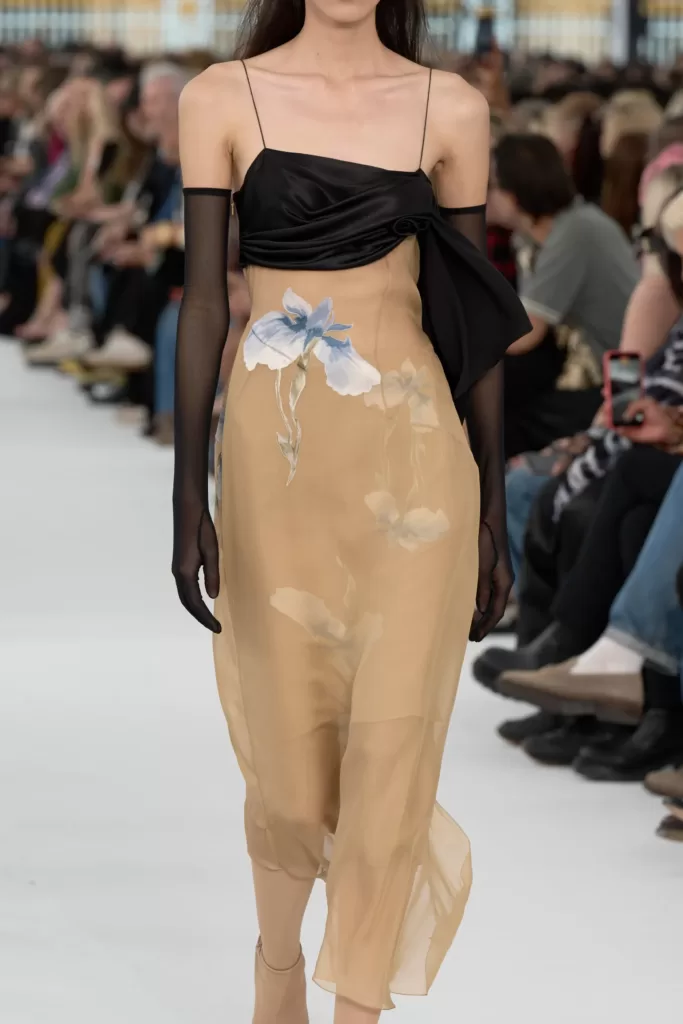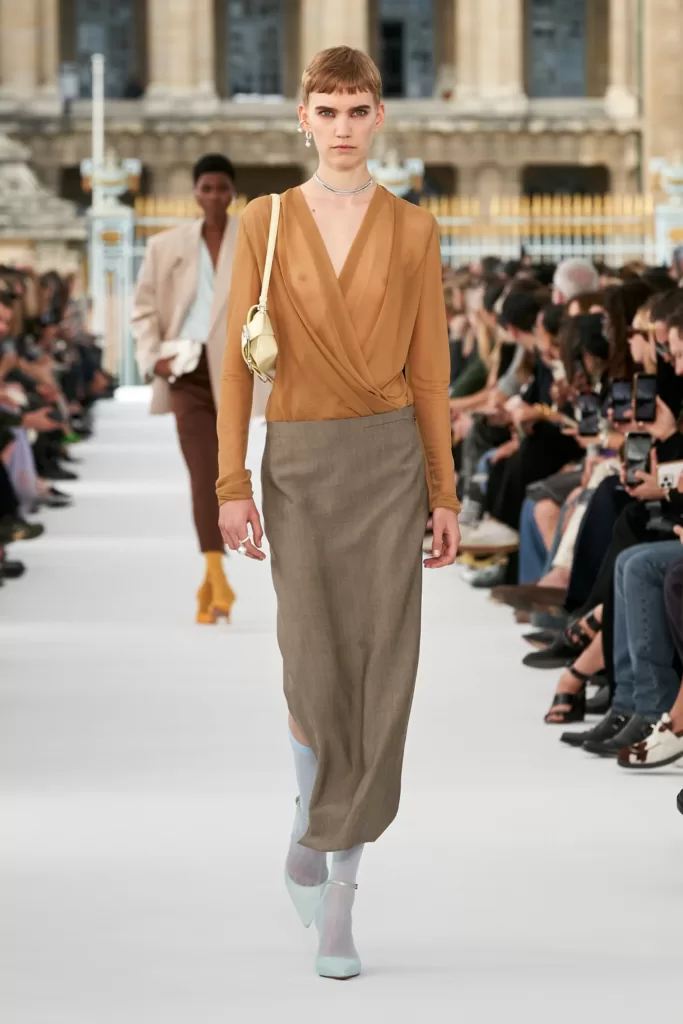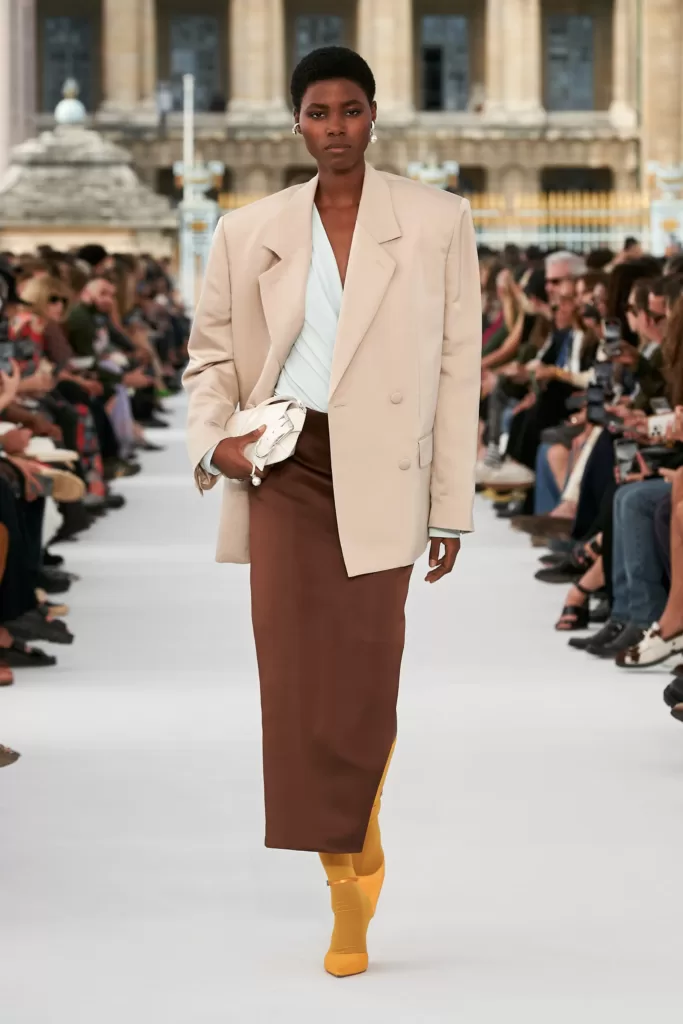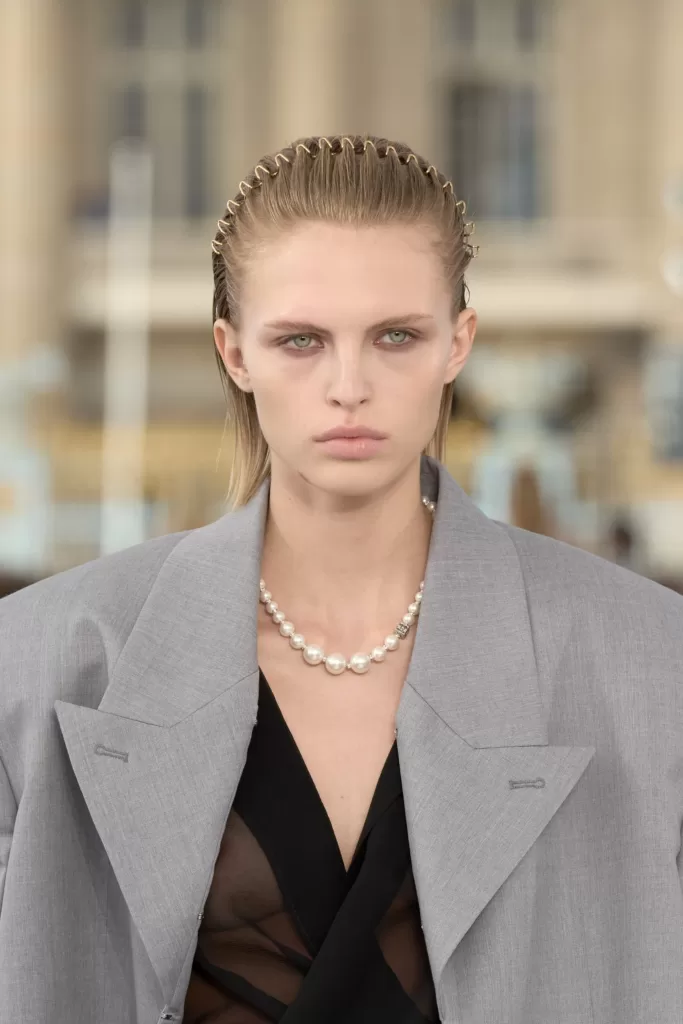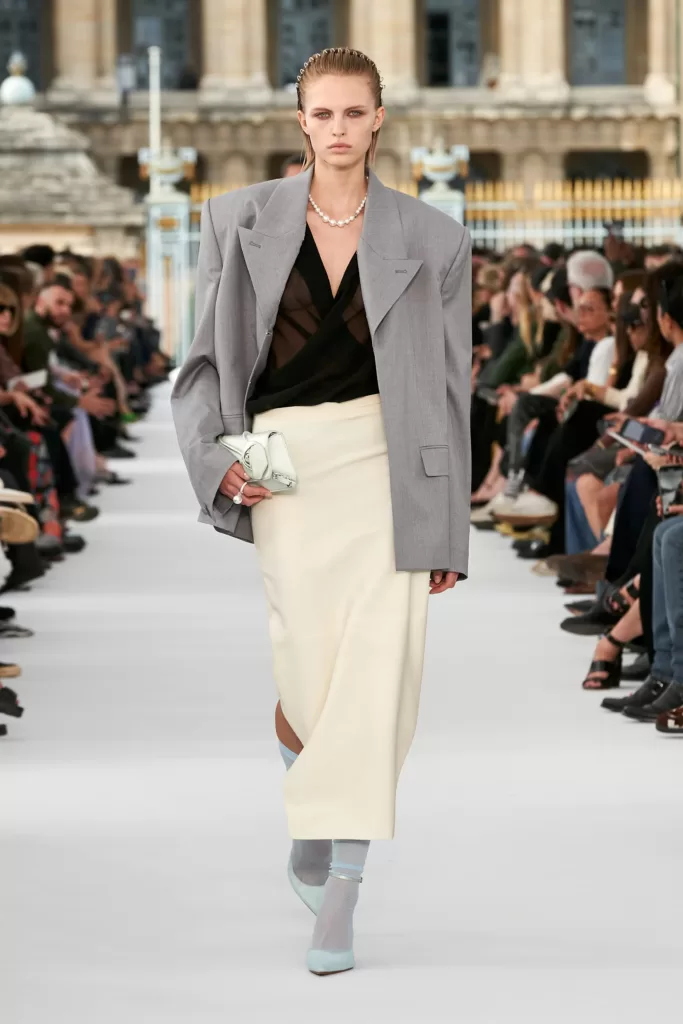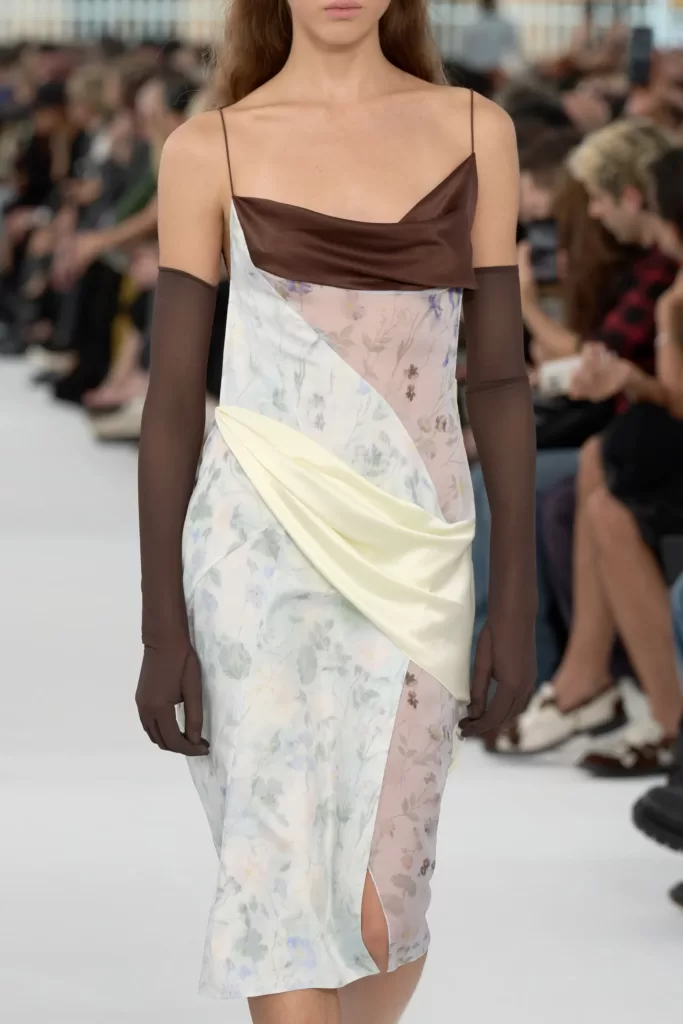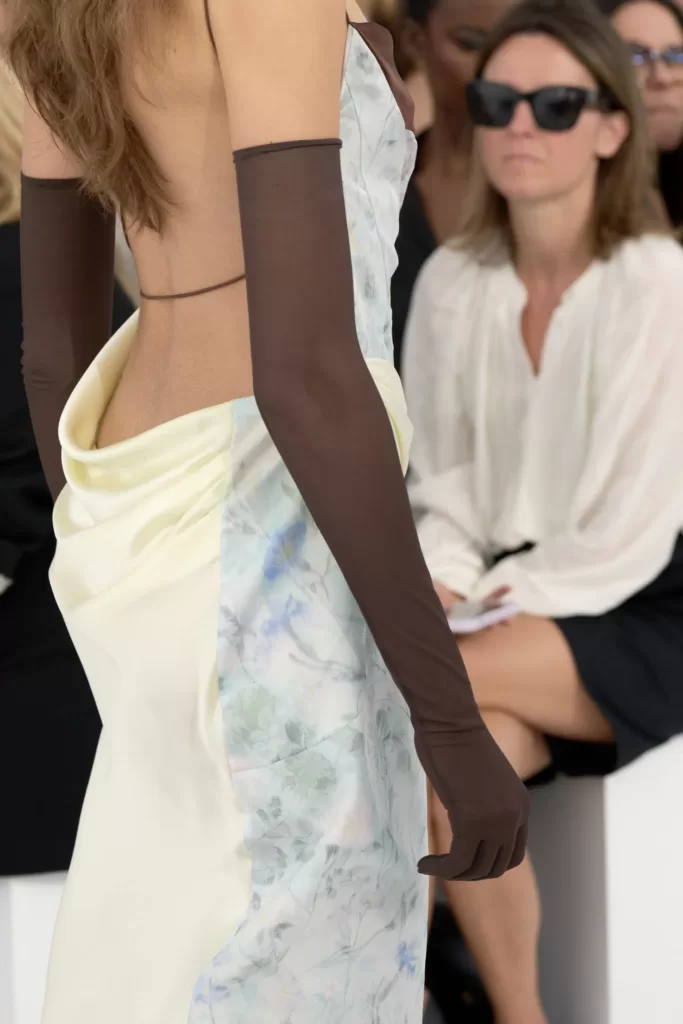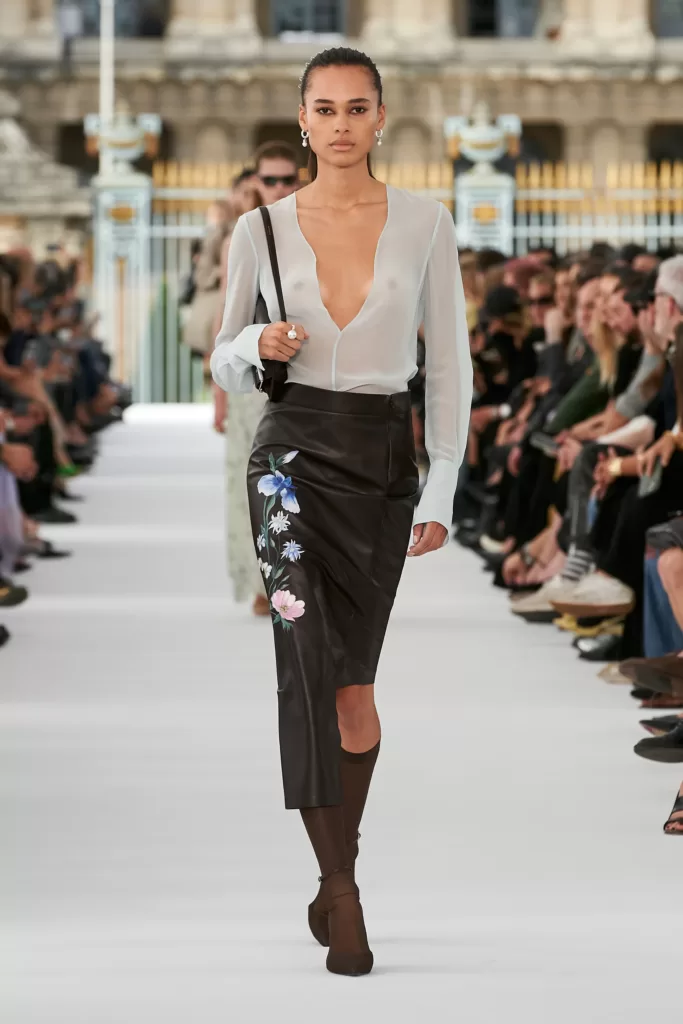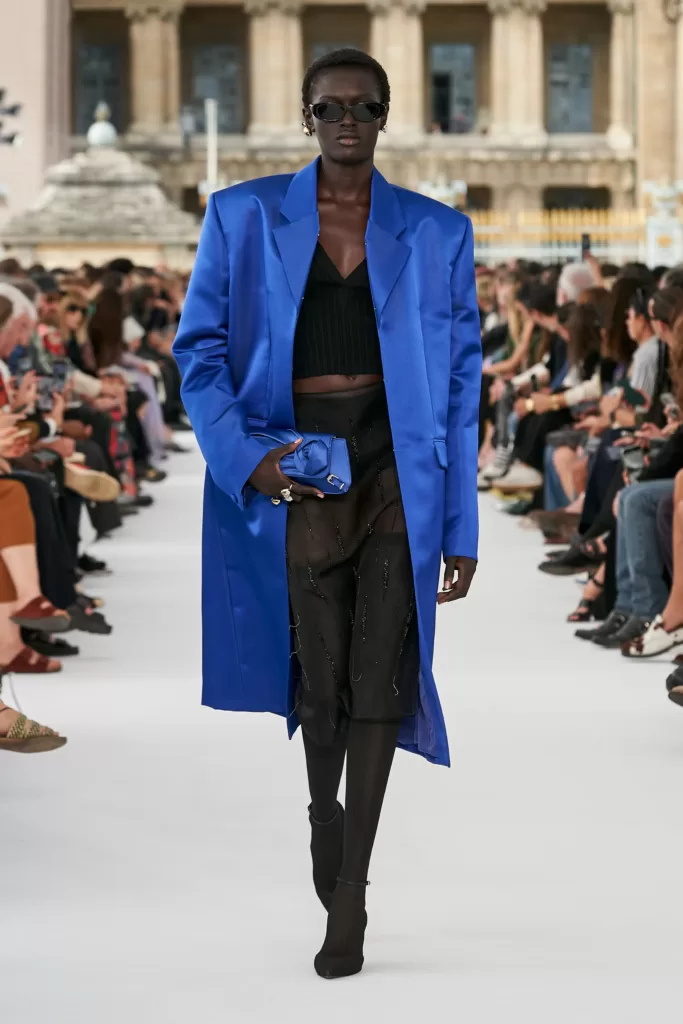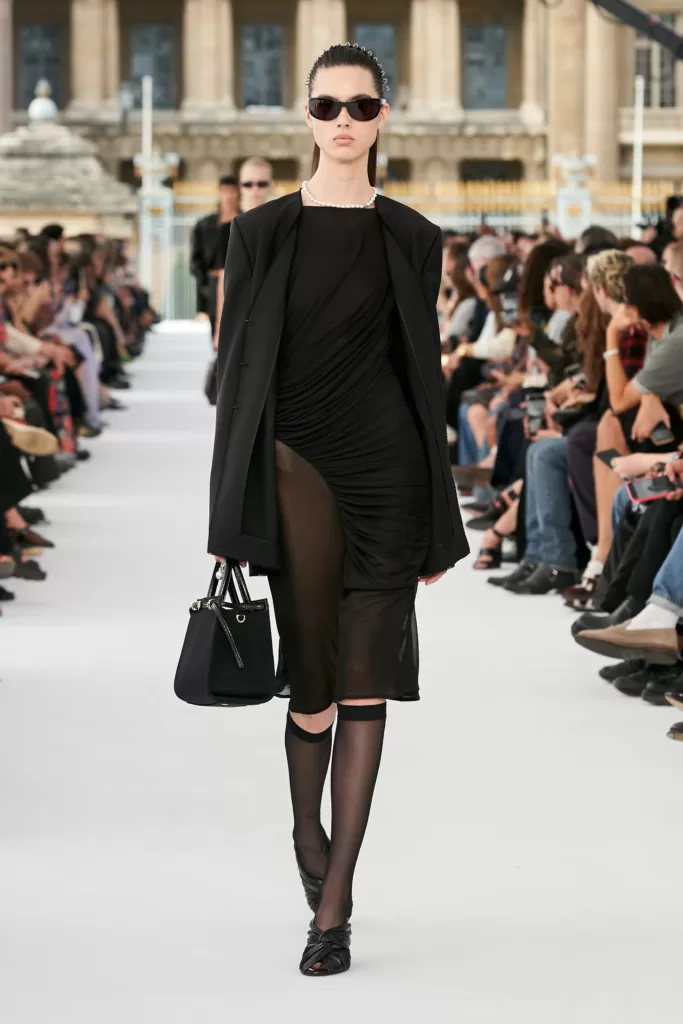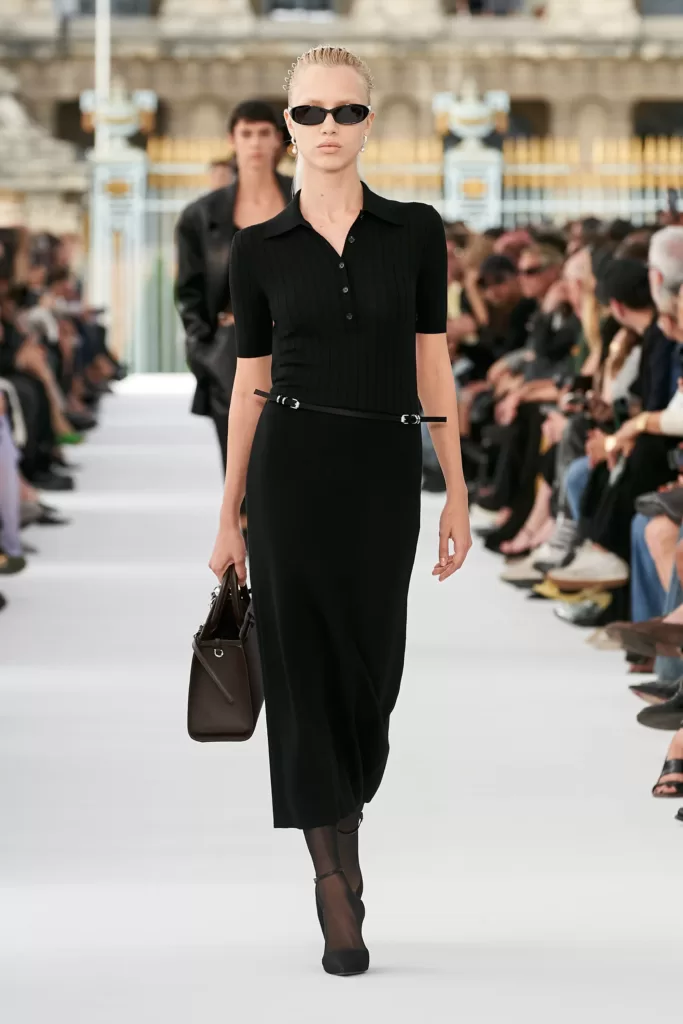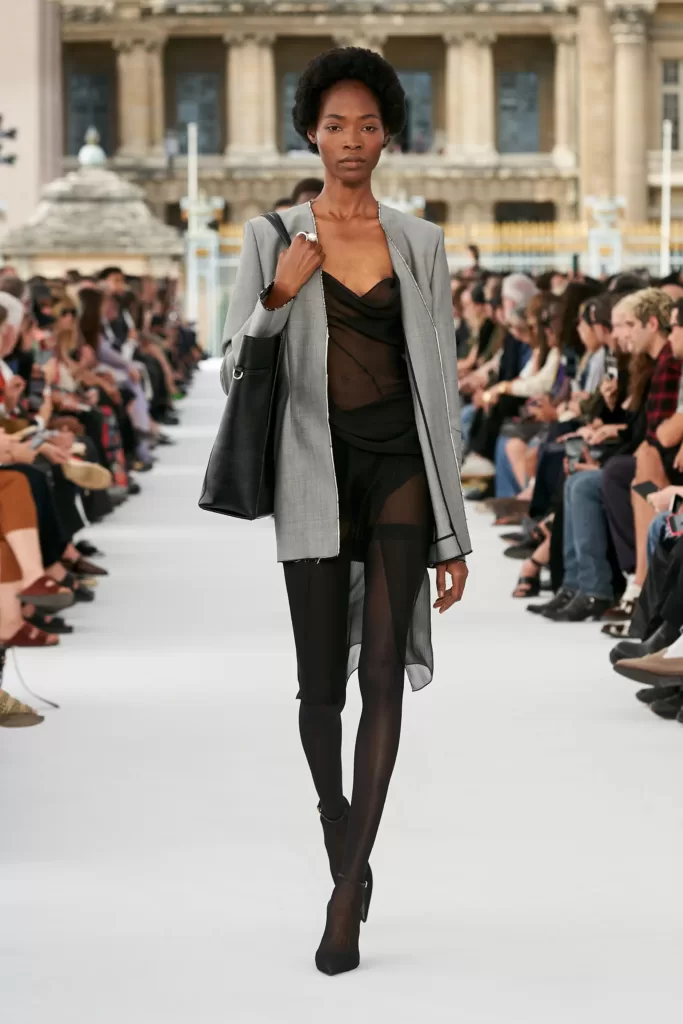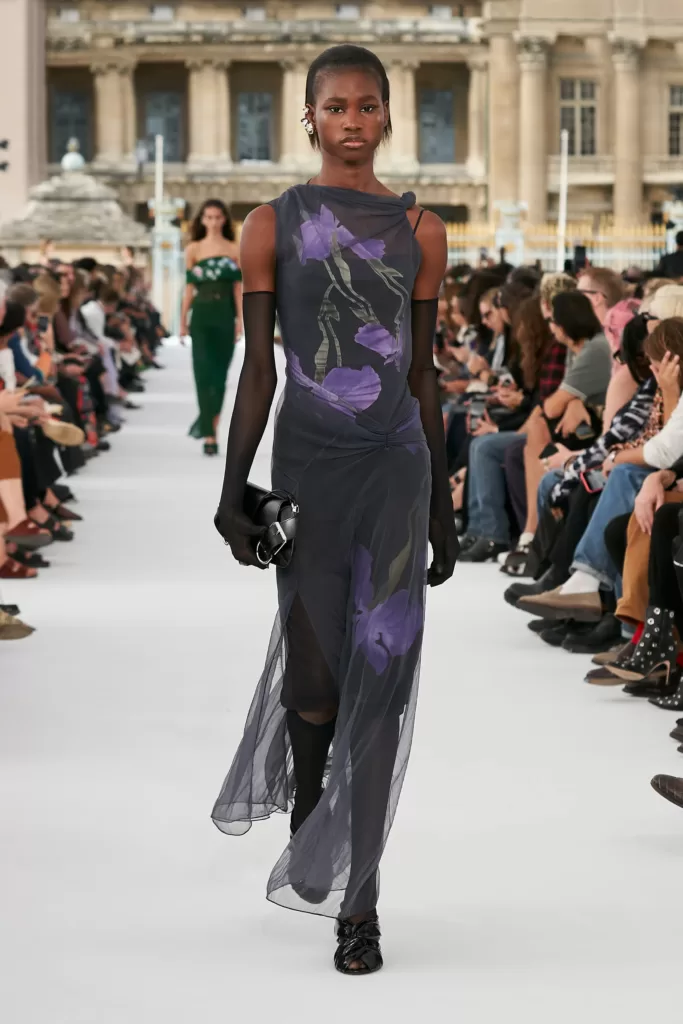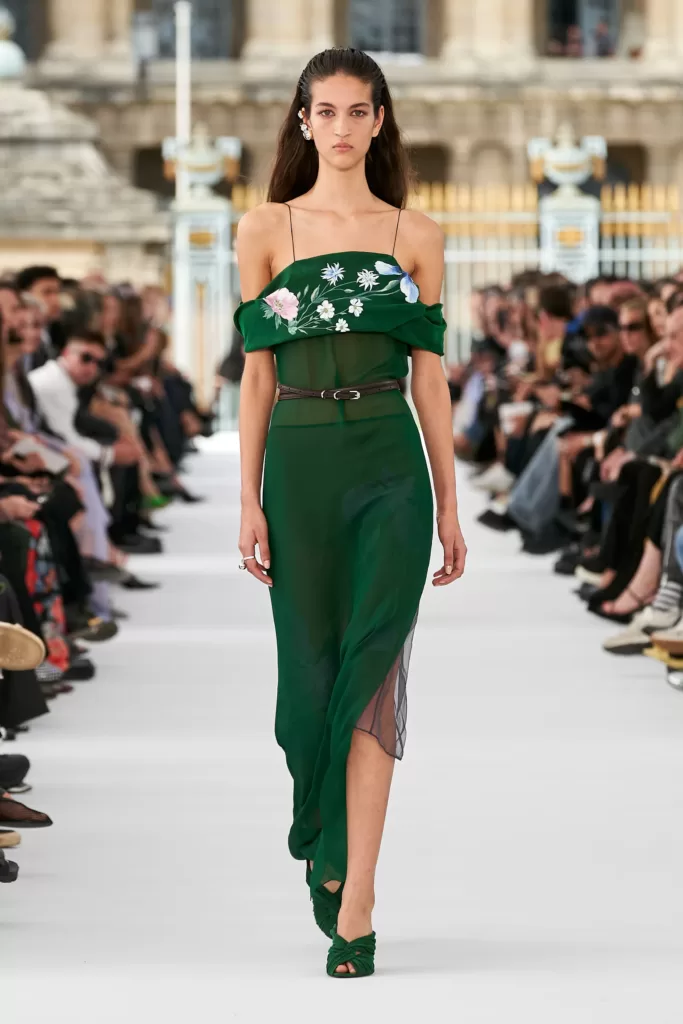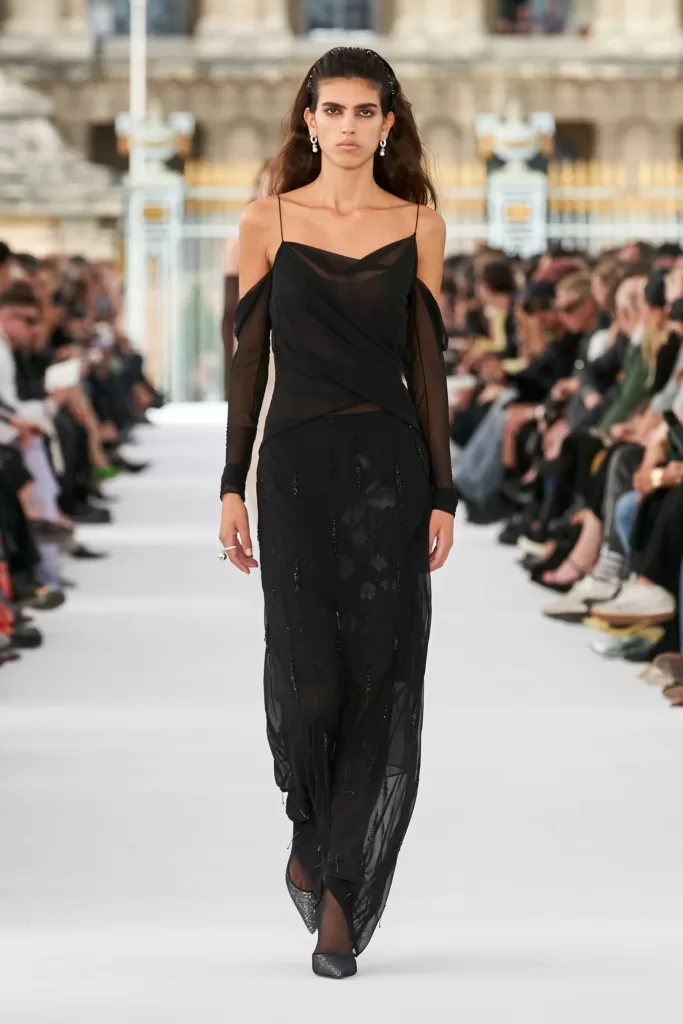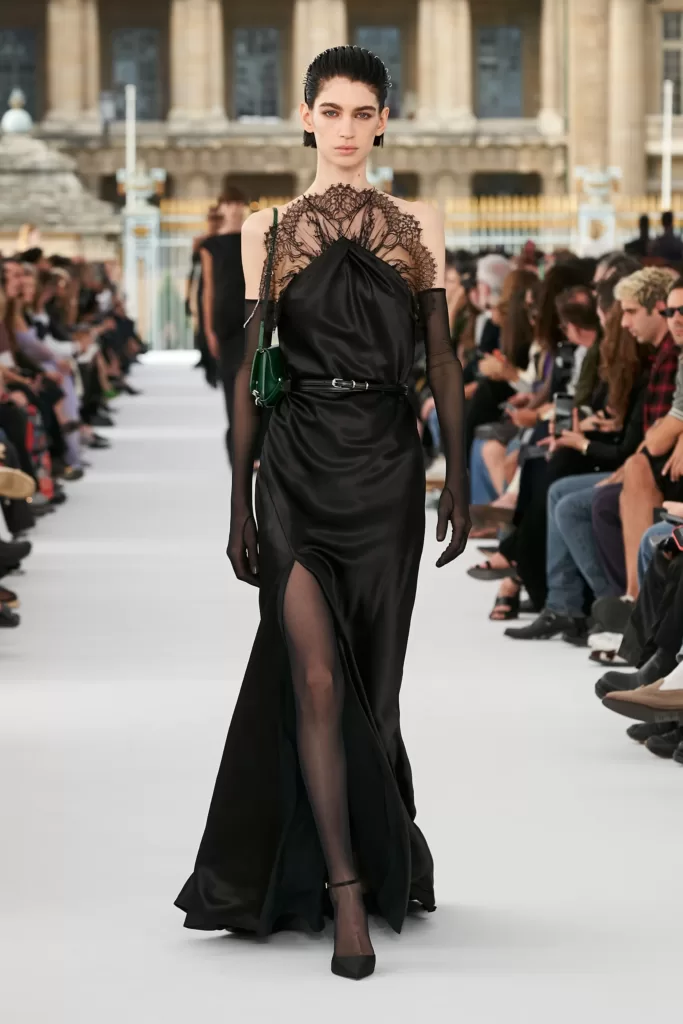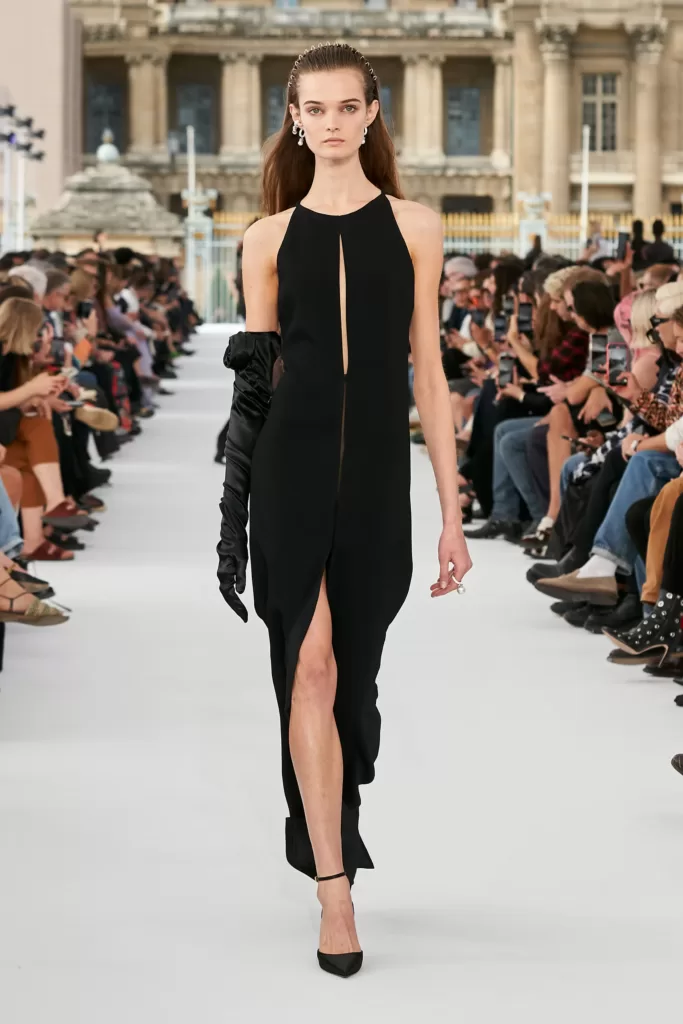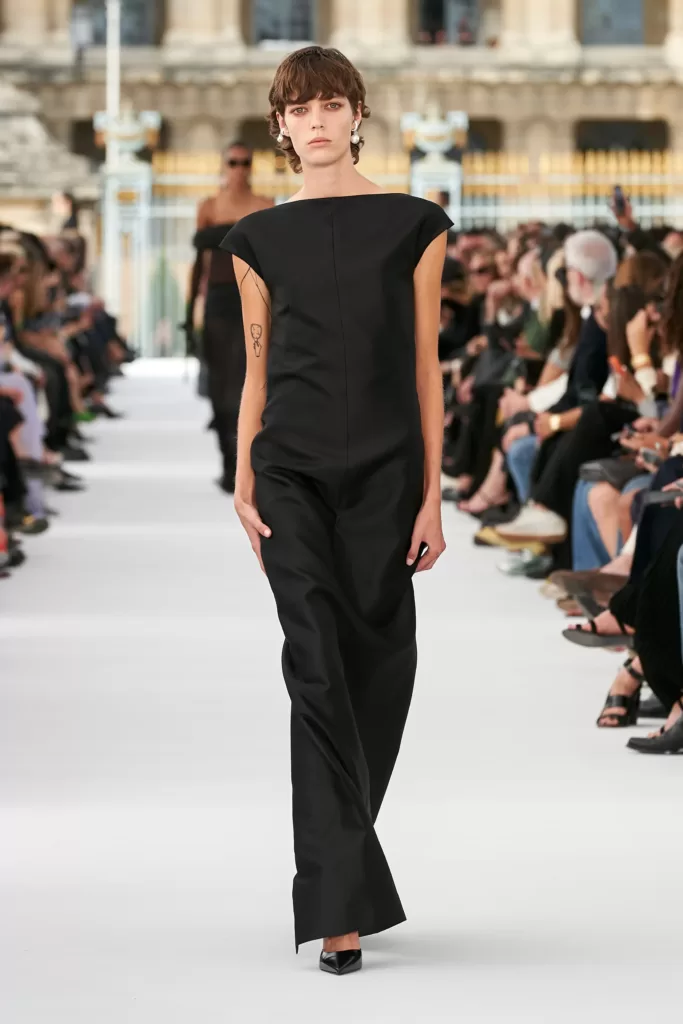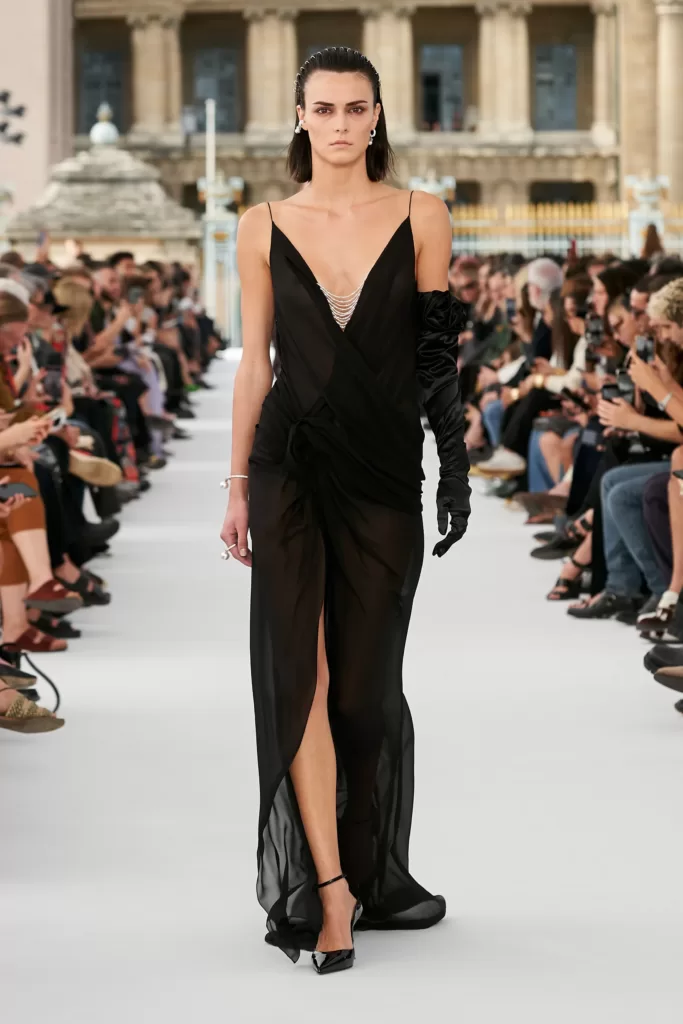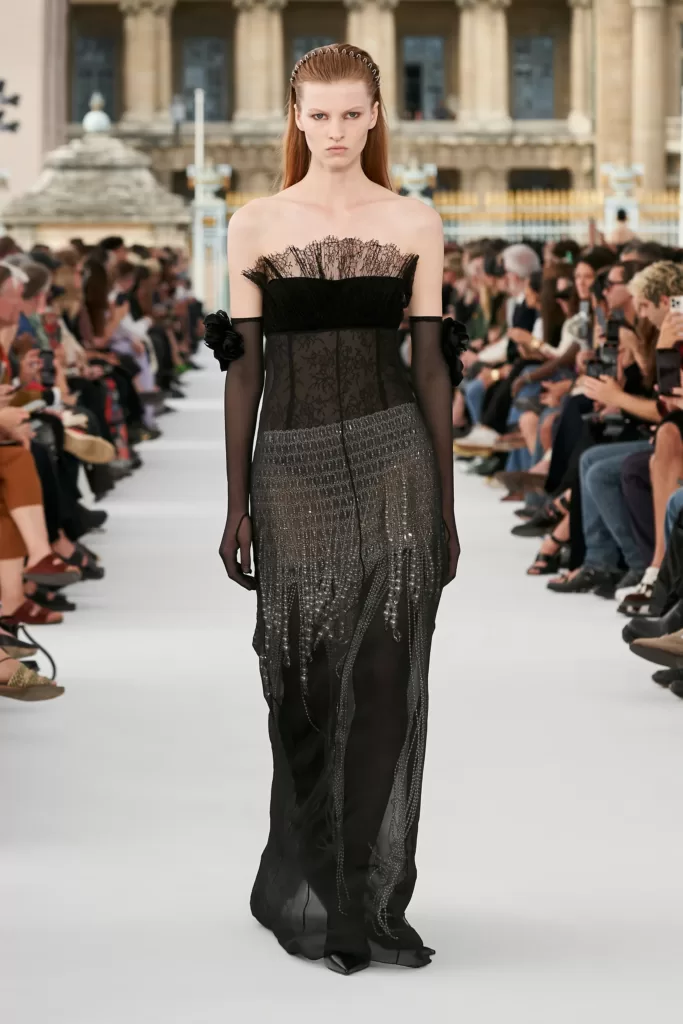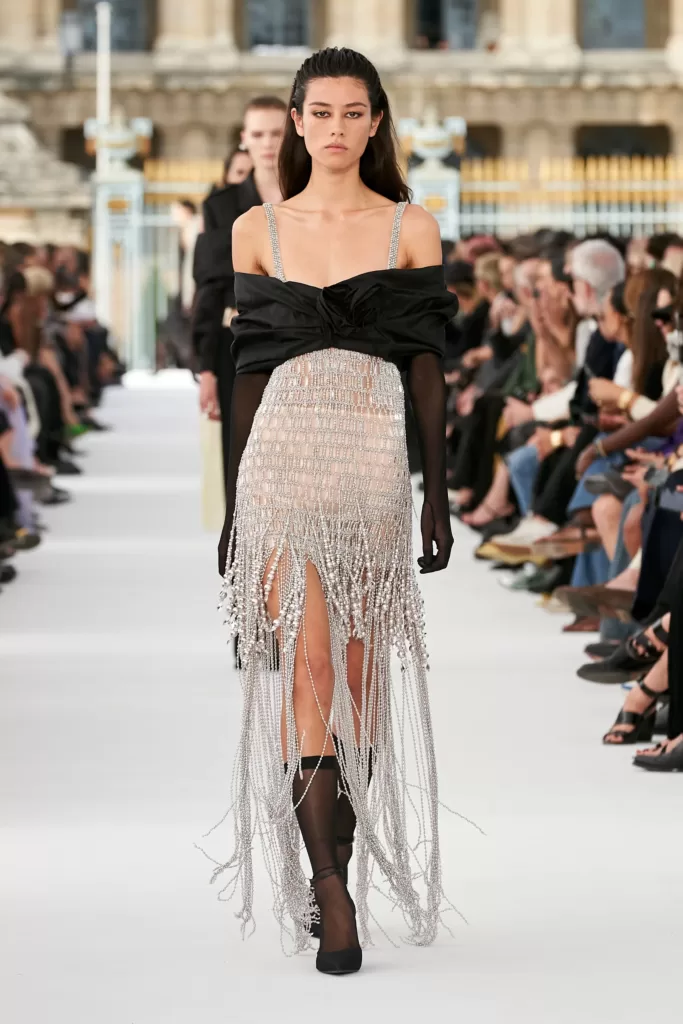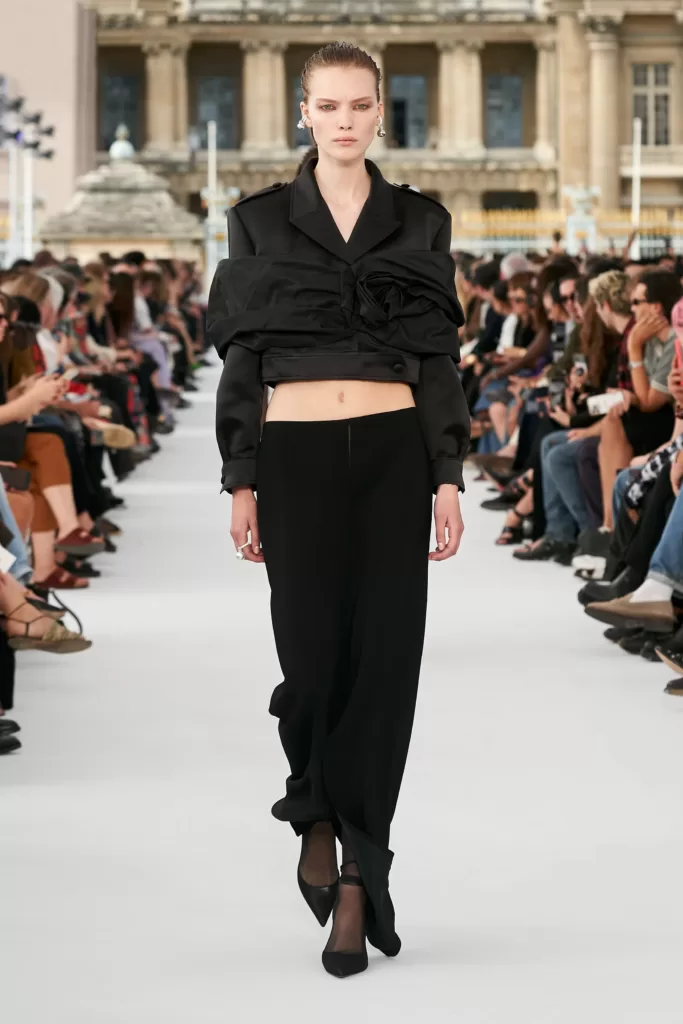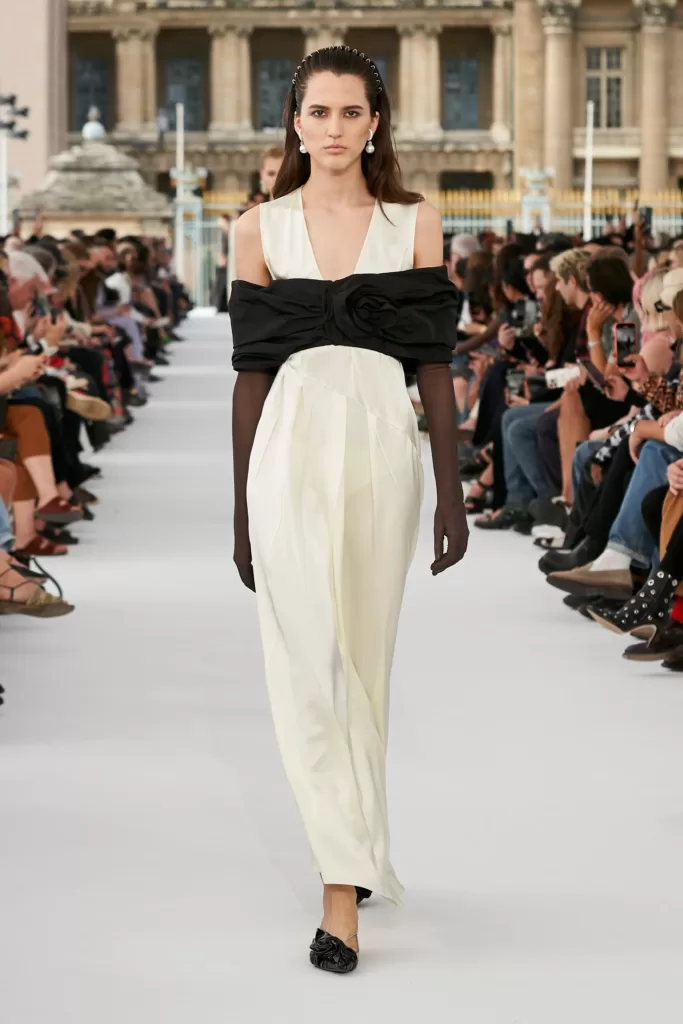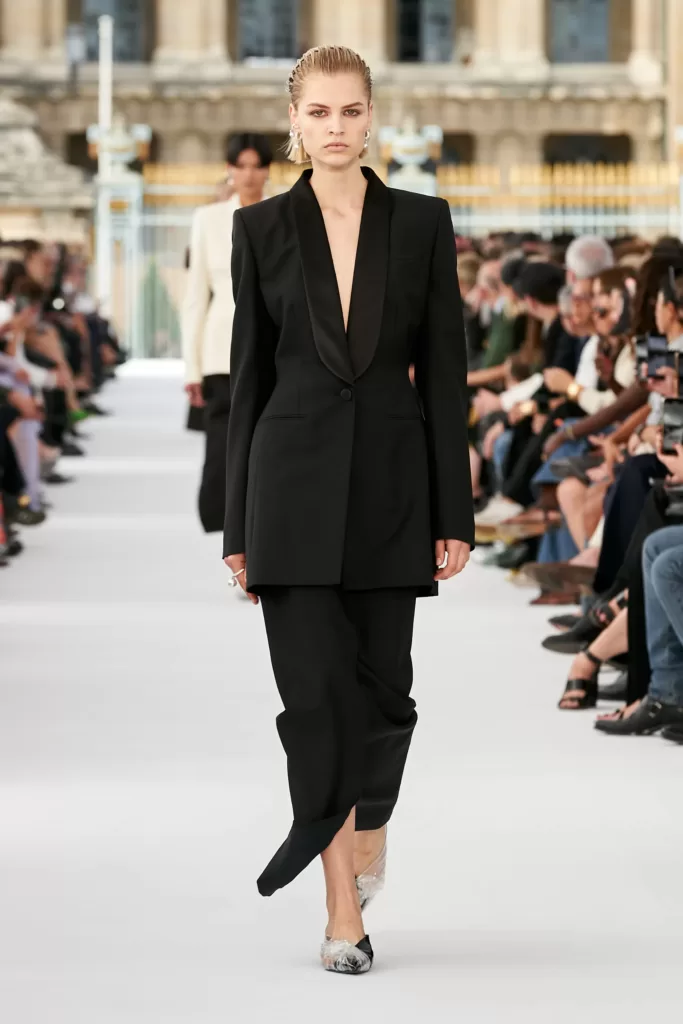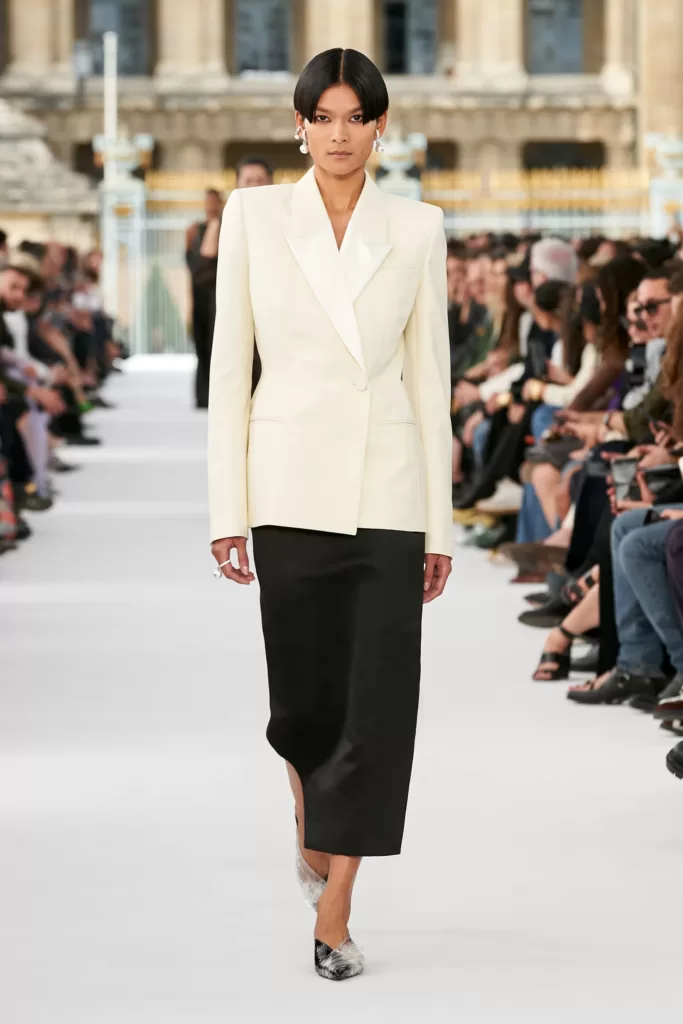So large were the crowds anticipated outside this show at L’École Militaire that the house designated a Givenchy-signposted, sports-event-style fan zone for them to gather in—an invitation most of the excited and friendly horde screamingly ignored. Once through the imposing iron gates, we were shown to an airy, open-wall, all-white 22nd-century Big Top. This was designed by Gabriel Calatrava: Backstage, Givenchy designer Matthew M. Williams waxed lyrical about his friend’s disruptive architectural philosophy.
By contrast, this collection was classically inclined, although liberally seasoned with a contemporary outlook. Williams’s dialogue with Carine Roitfeld is continuing (she was in bravura, twinkly form backstage), and there was plenty of Parisienne oomph in the high-denier nylons, ruche-detail shoes, garter-fastened leather skirts, and cross-draped sheer chiffon dresses.
Williams’s trademark high revere, notch/peak collar, and wide-shoulder tailoring often framed or overlaid the looks, sometimes in house-staple black wool or leather or via long, jewel-colored topcoats. It was also softened and sculpted around the body in wrapped shirting and dresses in deconstructed tailoring pieces that Williams said he was especially pleased with: These were in part inspired by research into the sculptural radicalism of Ossip Zadkine and Constantin Brâncuși. Elsewhere a gray menswear jacket shorn of its collar and unfinished at its edges was placed over a sheer evening dress, a look that combined a stripped-back, essentialized précis of these twin poles of the collection.
Yet the collection also leaned heavily toward eveningwear, as did the outfits of many guests (even if it was barely 4 p.m.). Following Givenchy’s recent Tiffany & Co. collaboration, there was a smattering of Fabergé-precious heritage Easter eggs as reference to the founder’s defining muse, Audrey Hepburn. Amongst those were the bows that enveloped arms and bosoms on jackets and dresses and served as a reconfigured nod to the piece worn by Hepburn for a 1963 Vogue shoot. Another was a split-front variant of Givenchy’s most famous little black dress partnered with one opera glove (but no chignon or cigarette holder). Opera coats in satin blended the volume of Hepburn’s Funny Face staircase sweeper with Williams’s tailoring architecture. This runway featured some models who, despite their height, seemed as slight and angular as Hepburn herself, a questionable casting trend that is seemingly perennial—and which has returned yet again at several shows this Paris Fashion Week.
Floral-shaped twists of chiffon and hand-painted flowers were displayed alongside botanical prints and lace trimmings. These conventionally heritage details were contrasted with more forward-facing facets, including the long-front, arch-back hemlines on dresses that left the calves framed and the shins curtained. One of them, a curved-neckline black dress, unfolded down its back in two open sheets of material to expose the shoulders like a double-page spread. If Williams’s menswear is motivated—as he regularly observes—by what he wants to wear, then his womenswear reflects the women around him. This collection also bore a down-the-decades echo of the founder’s immensely sophisticated Old World codes, which in turn played against Willams’s up-to-the-minute California polish.
BY LUKE LEITCH
September 28, 2023
Vogue.com

